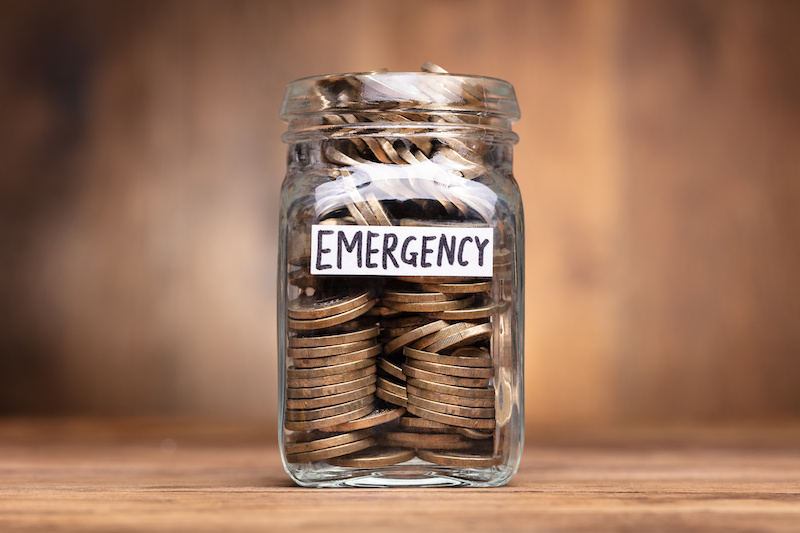Did you know that 4 in 10 Americans would not be able to cover $400 of unexpected expenses using their own resources if they needed to? Thirteen percent of Americans could not even pay their current month’s bills if they had an unforeseen $400 expense1. So how do you build up enough of a buffer?
Saving is not easy – especially if you are living paycheck to paycheck – and paying your bills is still really important to you. Missing a credit card minimum payment or a bill may impact your long-term financial health significantly, and we all know recovering from debt and collections could be more difficult. That is why you need an emergency fund!
What is an emergency fund?
An emergency fund can be an interest-earning savings account (such as a High Yield Saving Account or Automatic Saving Account) that can be accessible without tax or penalty. Generally, it is not a good idea to put emergency savings into 401k and IRA accounts or mutual funds and stocks, as these usually trigger fees when you want to access money. Thus, an emergency fund tucked away in any sort of interest-earning savings account is the way to go!
Here’s the most important rule: your emergency fund should be used only for real emergencies! Real emergencies can include:
-
- Unemployment
- Unforeseen medical expenses
- Essential home or car repairs
- Unexpected travel expenses (for family care, funeral, etc.)
Long-term savings for college tuition, retirement, a new car, and vacation should not generally be considered reasons to tap into your emergency savings.
Why do you need an emergency fund?
Having an emergency fund will better situate you to overcome a financial crisis and it can enable you to:
-
- Help your loved ones
- Start a job search or consider a career change with a clear mind. If you are laid off, you will have time to brush up your skills and improve your resume without worrying about your short-term expenses.
- Avoid tapping into your 401k or IRA accounts and therefore avoid taxes or penalties.
- Pay your bills on time and protect your credit health.
How much should I save for an emergency fund?
The quick answer is “it depends”, because it varies for everyone. The amount should be sufficient enough to ideally cover at least 3 months of essential needs (food, bills, rent/mortgage, daycare etc.). If you rely on a single source of income, or you are self-employed, you will ideally need at least 6 months of emergency funding.
Nobody knows your financial situation better than yourself. So, based on your skills, the industry you work, and the stream of income, you can decide on the sufficient amount for you.
Where should I put the emergency funds?
High-yield saving accounts, which are generally federally insured up-to $250,000, would be a top choice. But whatever you choose to set up your emergency fund, the most important point is that, in an emergency situation you can access the funds immediately. Some high-yield saving accounts are:
How do I build an emergency fund?
Our quick steps to build an emergency fund are:
- Avoid touching your emergency savings if there is no real emergency. Ideally, you will be setting this money aside and saving for a rainy day. This means, you should avoid tapping into these funds for investments, non-essential items or activities, and general leisure. This money should be your last resort, so always protect it.
- Start now! As Aristotle says: “The beginning seems to be more than half of the whole.” Take action now. You are saving for your ‘emergency’ fund, so the sooner the better!
- Start slow. A penny saved is a penny earned! You can even start with $1 or $2 dollars a day. If you save $2 a day ( that’s $14 a week and $728 a year!). If you can save $50 a week, you will have $2600 a year – a sizable amount to cover emergencies. You’ll be surprised how quickly small amounts grow over time!
- Celebrate your milestones. Set achievable goals and celebrate them. Celebrate your first $100, first 1 month and first 3 month emergency fund milestones.
- Run in your own lane. Saving small amounts of money may be difficult for some people. Just focus on what’s right for you and your family.
Bonus Step – At Credit Sesame, we strive to help you make effective financial decisions. If you want to receive personalized financial advice and offers from us, sign up for Credit Sesame now! It is 100% free. For more information on this or any of our topics, please pop over to our SesameThrive Community, and join the conversation.





















